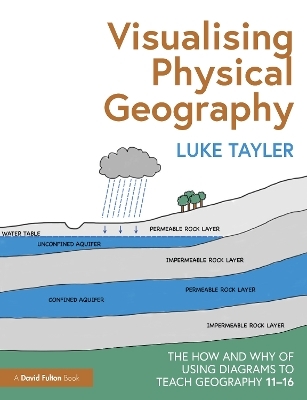
Visualising Physical Geography: The How and Why of Using Diagrams to Teach Geography 11–16
Seiten
2023
Routledge (Verlag)
978-1-032-30105-1 (ISBN)
Routledge (Verlag)
978-1-032-30105-1 (ISBN)
This practical guide breaks down the complex and broad field of physical geography, demonstrating how diagrams can be used by teachers to effectively explain the key concepts behind many natural processes and landforms. With over 200 diagrams that cover key topics, this is an essential guide for any Key Stage 3 or 4 Geography teacher.
This practical guide breaks down the complex and broad field of physical geography, demonstrating how diagrams can be used by teachers to effectively explain the key concepts behind many natural processes and landforms. Featuring over 200 diagrams that cover the key topics taught in Key Stage 3 and 4 Geography, the book shows teachers how they can convey age-appropriate concepts without overwhelming or oversimplifying.
Supported by summaries of background knowledge, common misconceptions, questions to check understanding, and extension activities, the concepts and topics explored include:
Rocks and weathering
Plate tectonics
Rivers
Coasts
Weather and climate
Ecosystems
Glaciation
Backed by research and evidence to support the use of diagrams in the classroom, this is an essential read for any geography teacher or subject lead who wants to support their students in learning key concepts in physical geography.
This practical guide breaks down the complex and broad field of physical geography, demonstrating how diagrams can be used by teachers to effectively explain the key concepts behind many natural processes and landforms. Featuring over 200 diagrams that cover the key topics taught in Key Stage 3 and 4 Geography, the book shows teachers how they can convey age-appropriate concepts without overwhelming or oversimplifying.
Supported by summaries of background knowledge, common misconceptions, questions to check understanding, and extension activities, the concepts and topics explored include:
Rocks and weathering
Plate tectonics
Rivers
Coasts
Weather and climate
Ecosystems
Glaciation
Backed by research and evidence to support the use of diagrams in the classroom, this is an essential read for any geography teacher or subject lead who wants to support their students in learning key concepts in physical geography.
Luke Tayler is Head of Geography at St Christopher’s School, Bahrain.
1. Why use diagrams; 2. How diagrams support learning; 3. How diagrams support teaching; 4. The diagrams; Rocks and Weathering; Plate Tectonics; Rivers; Coasts; Weather and Climate; Ecosystems; Glaciation
| Erscheinungsdatum | 03.10.2023 |
|---|---|
| Zusatzinfo | 2 Tables, black and white; 335 Line drawings, color; 8 Halftones, color; 343 Illustrations, color |
| Verlagsort | London |
| Sprache | englisch |
| Maße | 189 x 246 mm |
| Gewicht | 760 g |
| Themenwelt | Sozialwissenschaften ► Pädagogik ► Schulpädagogik / Sekundarstufe I+II |
| ISBN-10 | 1-032-30105-8 / 1032301058 |
| ISBN-13 | 978-1-032-30105-1 / 9781032301051 |
| Zustand | Neuware |
| Informationen gemäß Produktsicherheitsverordnung (GPSR) | |
| Haben Sie eine Frage zum Produkt? |
Mehr entdecken
aus dem Bereich
aus dem Bereich
Praxisbuch Meyer
Buch | Softcover (2021)
Cornelsen (Verlag)
31,00 €


